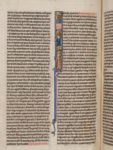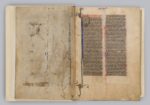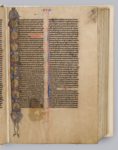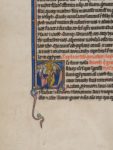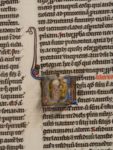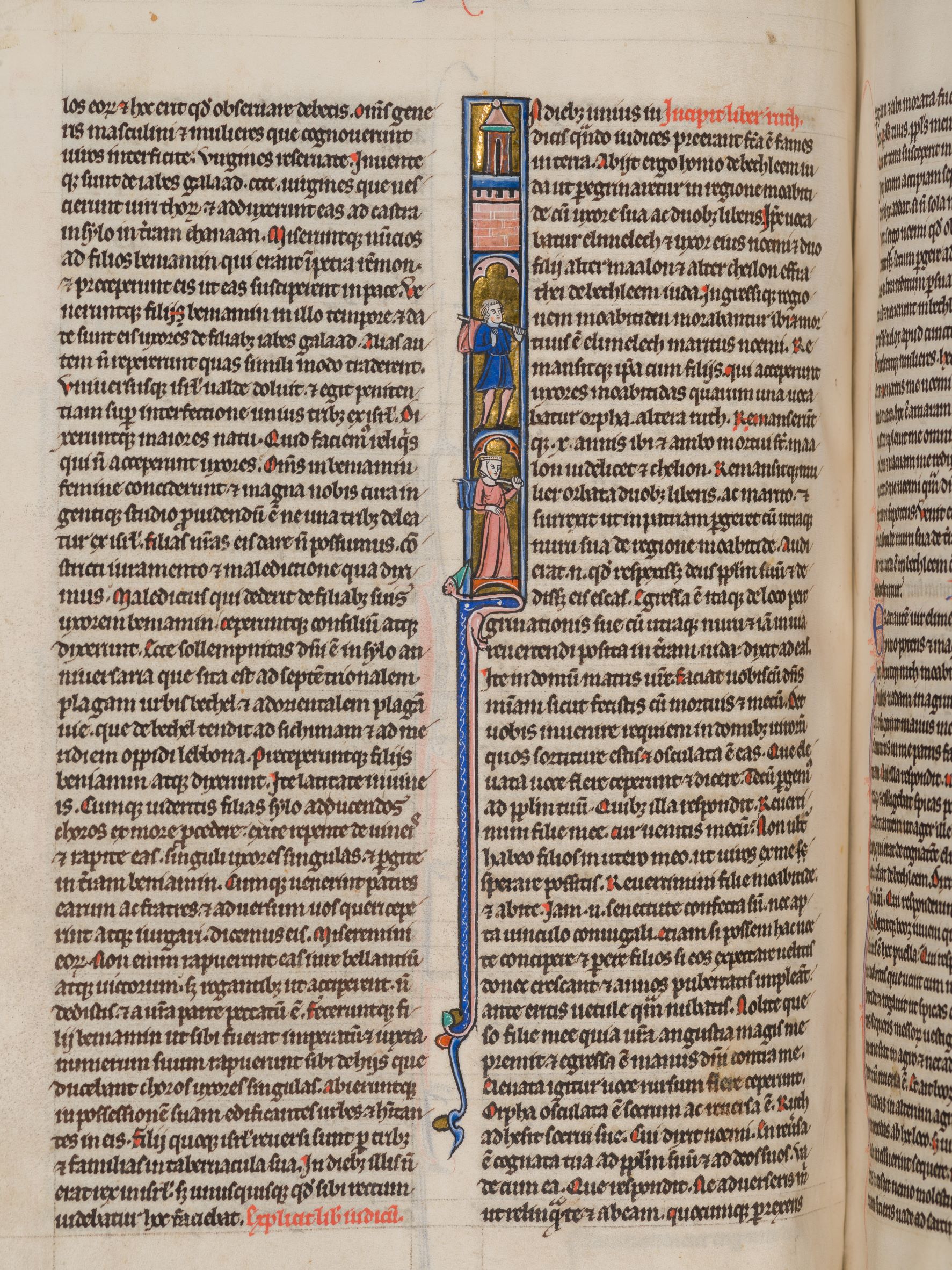
Paris Bible, c. 1250–1300 [MS29]
Probably France
Manuscript on vellum, ff. ii+548+ii. Bound in white alum-tawed pigskin over pasteboard by Roger Powell, 1963 (30.7 x 21.8 cm)
This large Bible is full of small and delicate illuminations and was probably produced in northern France (possibly England) in the 13th century. Many illustrate the stories told in the accompanying text or show figures standing under architectural canopies. They include eight roundels showing the seven days of Creation followed by the Virgin and Child (fol. 8r), Moses with the tablet of the Old Law (fol. 26v), and the beginning of the Book of Ruth, in which two figures—Naomi and her husband Elimelech, shown one over the other—depart from Bethlehem (fol. 99v). Some of the illuminations are damaged.
The text itself is a type of Latin Vulgate Bible, often referred to as a Paris Bible. In Paris and northern France in the 13th century, a conventional order of books of the Bible was established, forming the template for the modern Bible. Before this, Bibles often came in multiple volumes, whereas the Paris Bible contained the entire text in a single book. As a result, these books (as with MS29) were written on ultra-thin vellum, allowing more text to fit into one volume.
The Bible is accompanied by a Hebrew Psalter: a Latin text translated directly from the Hebrew Psalms. Tables of gospel and epistle lections of Sarum use were added to the beginning (fols 1–4v) and end (fol. 548v) of the manuscript in the 15th century. This, as well as the annotations in a 15th-century English hand, indicate that it was in England by this time.
Inscriptions that may have identified the Bible’s former owners have been cut from the beginning of the manuscript. The earliest preserved ownership mark (fol. 4r) is that of a cleric, John Brickhill, written in a 16th-century hand.
Literature: Neil R. Ker and Alan J. Piper, Medieval Manuscripts in British Libraries, Volume IV: Paisley–York (Oxford, 1969), pp. 622–23; Paul Yeats-Edwards, Winchester College (Warden and Fellows’ Library) Medieval Manuscript Collection: Brief History and Catalogue (London, 1978), p. 8; Paul Quarrie, Winchester College and the King James Bible (Winchester, 2011), pp. 32–33.
Provenance: John Brickhill (English, 16th century); given to Winchester College in 1827 by Paulet St John-Milmay (1791–1845), Old Wykehamist (1803–05) and MP for Winchester (1818–35).
Location: Fellows’ Library
